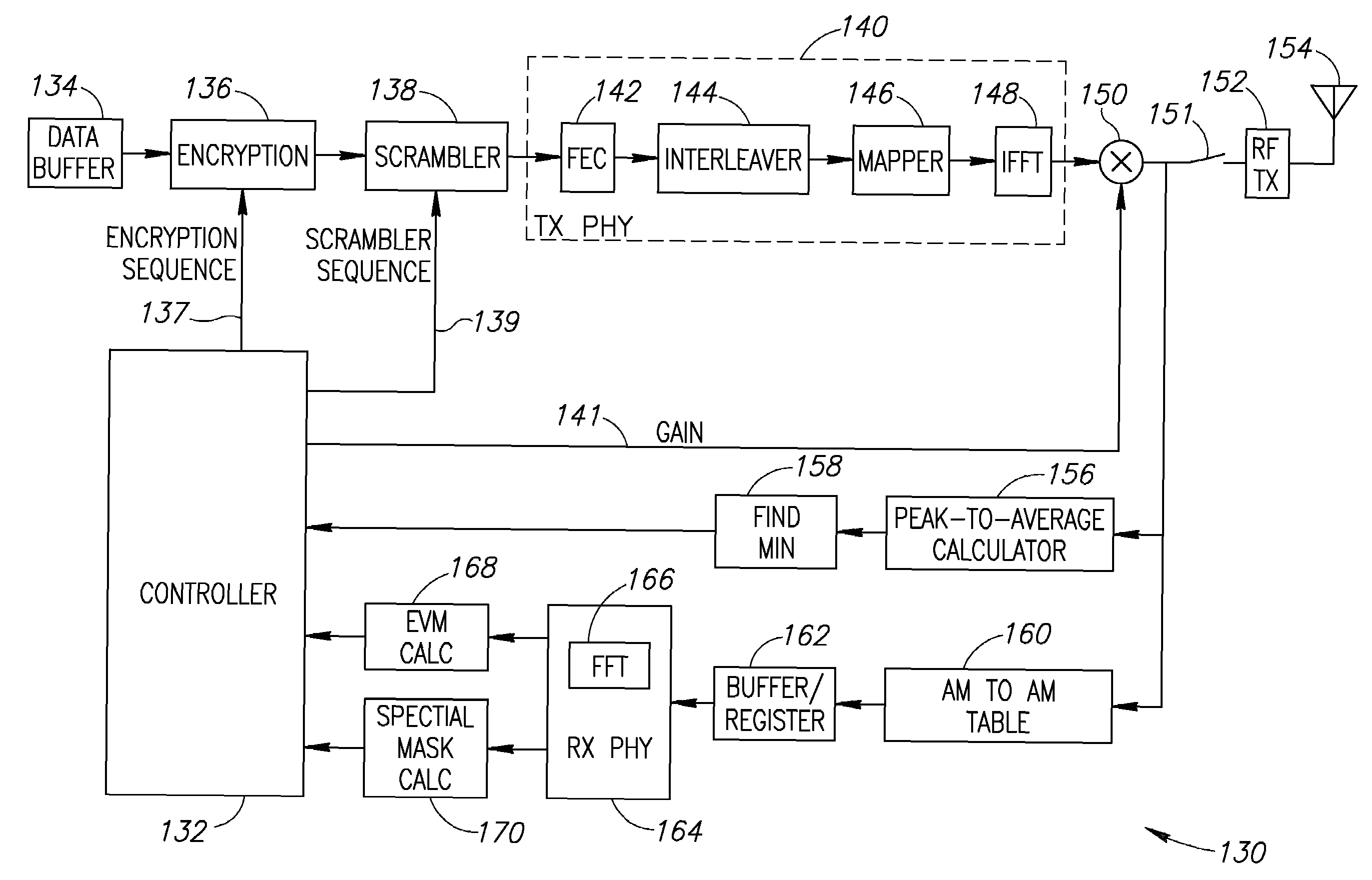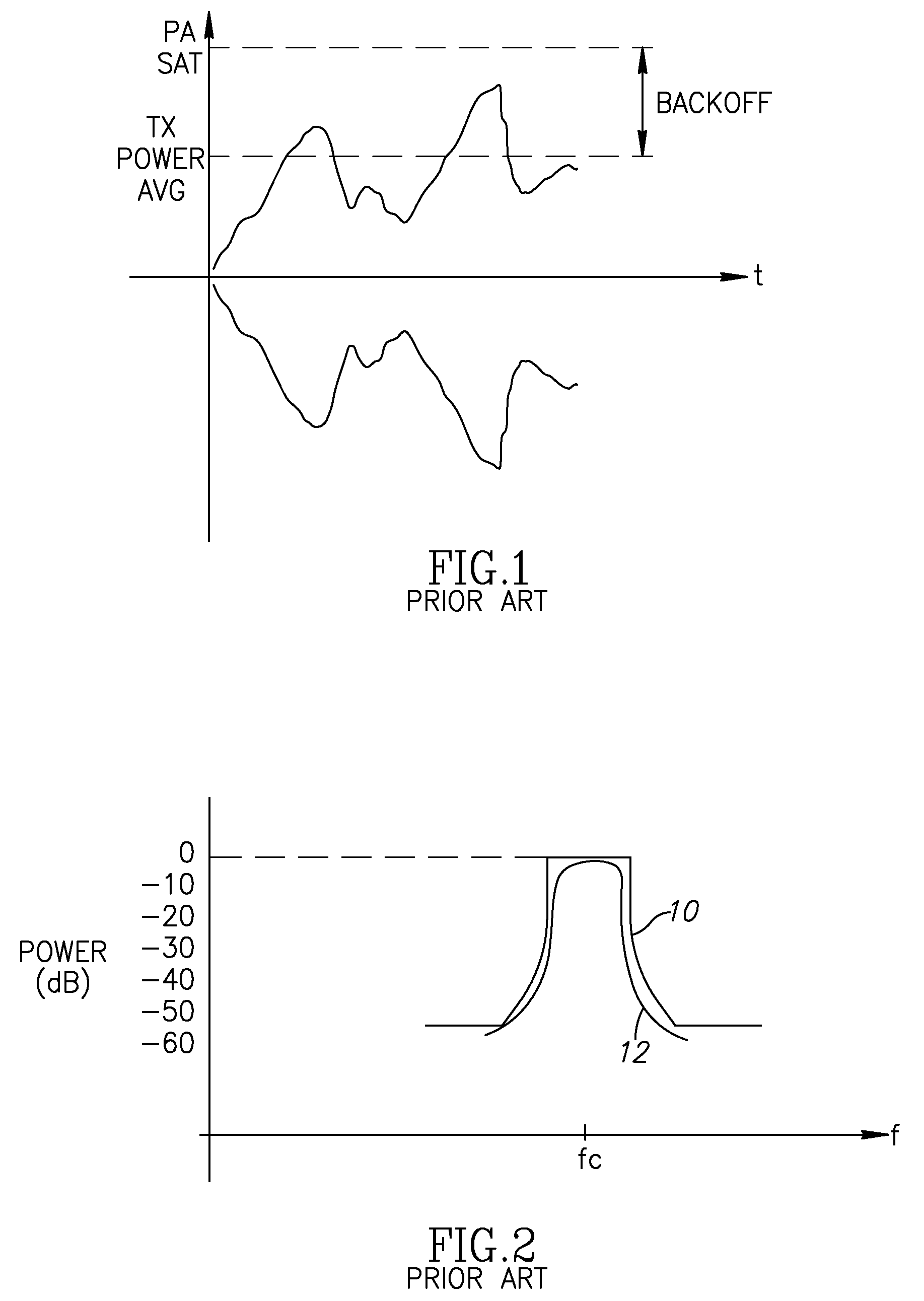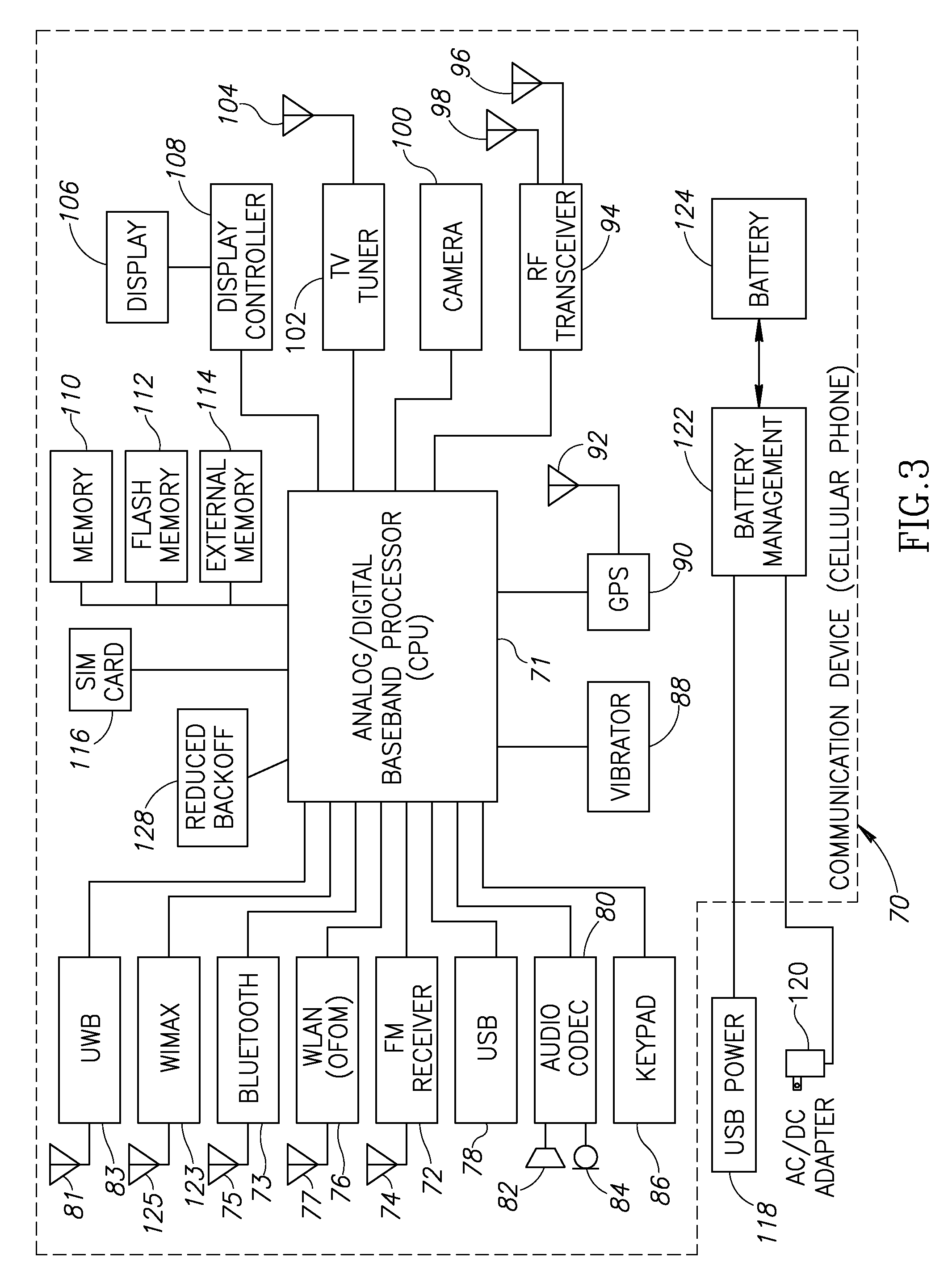Apparatus for and method of minimizing backoff for orthogonal frequency division multiplexing transmission
a technology of orthogonal frequency division and backoff, applied in the field of data communication, can solve the problems of channel response, however, which can be treated as finite, delay spread, and sinusoidal misalignment, and achieve the effect of reducing the backoff required for ofdm based transmitters, reducing the backoff required, and good evm
- Summary
- Abstract
- Description
- Claims
- Application Information
AI Technical Summary
Benefits of technology
Problems solved by technology
Method used
Image
Examples
Embodiment Construction
Notation Used Throughout
[0051]The following notation is used throughout this document.
TermDefinitionACAlternating CurrentACEActive Constellation ExtensionAMAmplitude ModulationASICApplication Specific Integrated CircuitAVIAudio Video InterleaveBERBit Error RateBMPWindows BitmapBPSKBinary Phase Shift KeyingCDMACode Division Multiple AccessCPUCentral Processing UnitD / ADigital to Analog ConverterDCDirect CurrentDSLDigital Subscriber LoopDSPDigital Signal ProcessorECCExtended Country CodeEPROMErasable Programmable Read Only MemoryEVMError Vector MagnitudeFDMFrequency Division MultiplexingFECForward Error ControlFFTFast Frequency TransformFMFrequency ModulationFPGAField Programmable Gate ArrayGPSGround Positioning SatelliteHDLHardware Description LanguageICIIntercarrier InterferenceIEEEInstitute of Electrical and Electronics EngineersIFFTInverse Fast Frequency TransformJPGJoint Photographic Experts GroupLANLocal Area NetworkMACMedia Access ControlMBSPMetric Based Symbol PredistortionMP3M...
PUM
 Login to View More
Login to View More Abstract
Description
Claims
Application Information
 Login to View More
Login to View More - R&D
- Intellectual Property
- Life Sciences
- Materials
- Tech Scout
- Unparalleled Data Quality
- Higher Quality Content
- 60% Fewer Hallucinations
Browse by: Latest US Patents, China's latest patents, Technical Efficacy Thesaurus, Application Domain, Technology Topic, Popular Technical Reports.
© 2025 PatSnap. All rights reserved.Legal|Privacy policy|Modern Slavery Act Transparency Statement|Sitemap|About US| Contact US: help@patsnap.com



